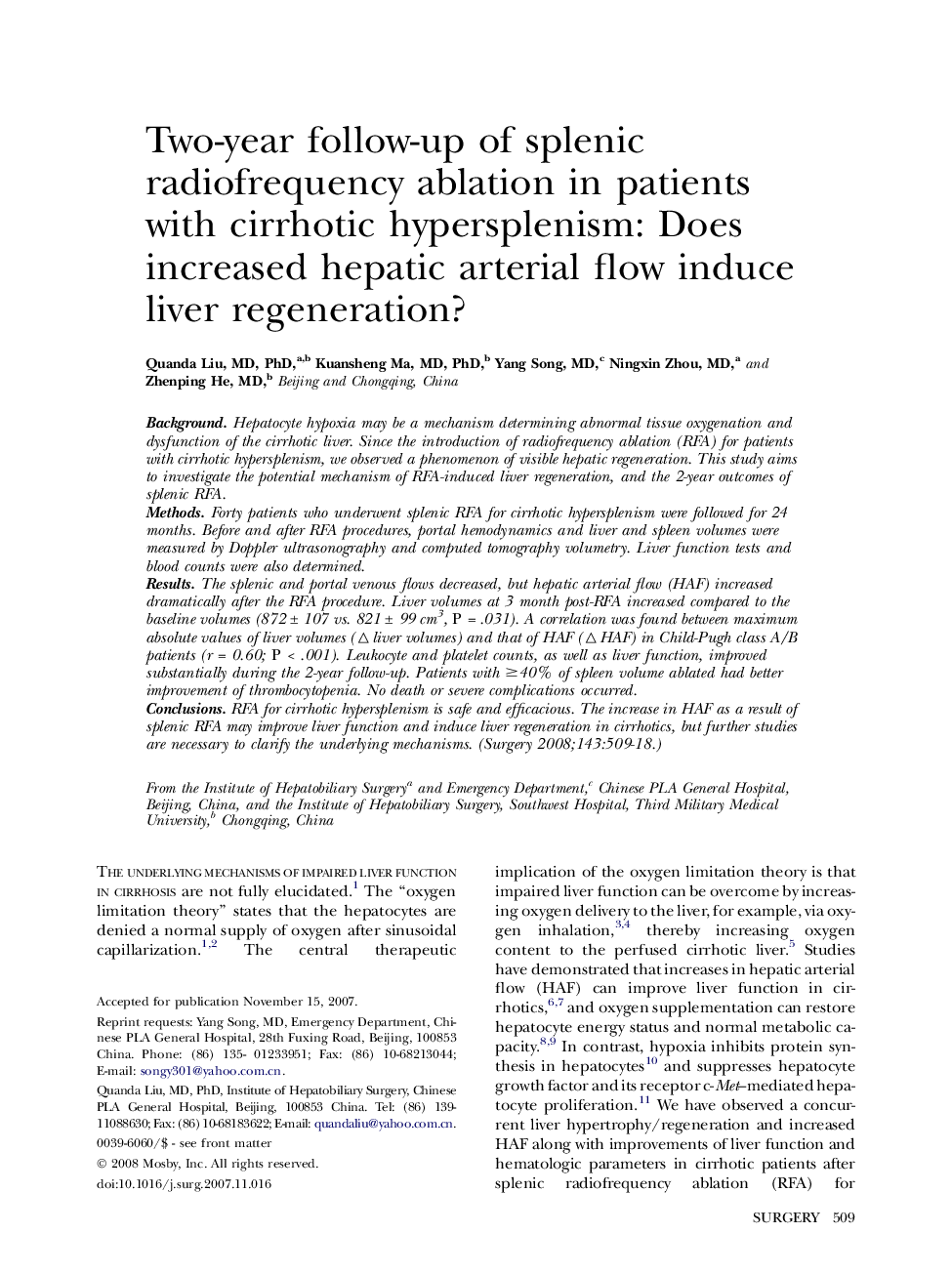| Article ID | Journal | Published Year | Pages | File Type |
|---|---|---|---|---|
| 4309357 | Surgery | 2008 | 10 Pages |
BackgroundHepatocyte hypoxia may be a mechanism determining abnormal tissue oxygenation and dysfunction of the cirrhotic liver. Since the introduction of radiofrequency ablation (RFA) for patients with cirrhotic hypersplenism, we observed a phenomenon of visible hepatic regeneration. This study aims to investigate the potential mechanism of RFA-induced liver regeneration, and the 2-year outcomes of splenic RFA.MethodsForty patients who underwent splenic RFA for cirrhotic hypersplenism were followed for 24 months. Before and after RFA procedures, portal hemodynamics and liver and spleen volumes were measured by Doppler ultrasonography and computed tomography volumetry. Liver function tests and blood counts were also determined.ResultsThe splenic and portal venous flows decreased, but hepatic arterial flow (HAF) increased dramatically after the RFA procedure. Liver volumes at 3 month post-RFA increased compared to the baseline volumes (872 ± 107 vs. 821 ± 99 cm3, P = .031). A correlation was found between maximum absolute values of liver volumes (▵liver volumes) and that of HAF (▵HAF) in Child-Pugh class A/B patients (r = 0.60; P < .001). Leukocyte and platelet counts, as well as liver function, improved substantially during the 2-year follow-up. Patients with ≥40% of spleen volume ablated had better improvement of thrombocytopenia. No death or severe complications occurred.ConclusionsRFA for cirrhotic hypersplenism is safe and efficacious. The increase in HAF as a result of splenic RFA may improve liver function and induce liver regeneration in cirrhotics, but further studies are necessary to clarify the underlying mechanisms.
